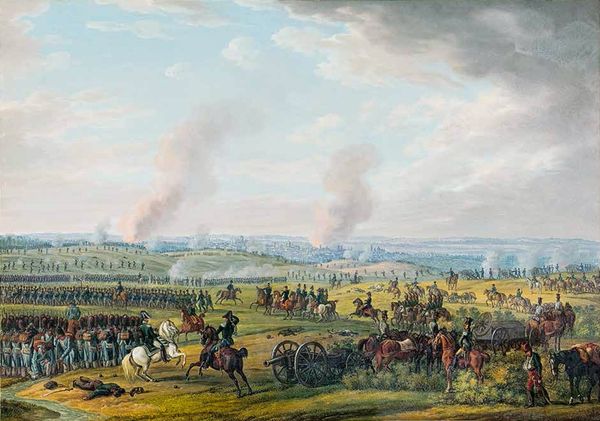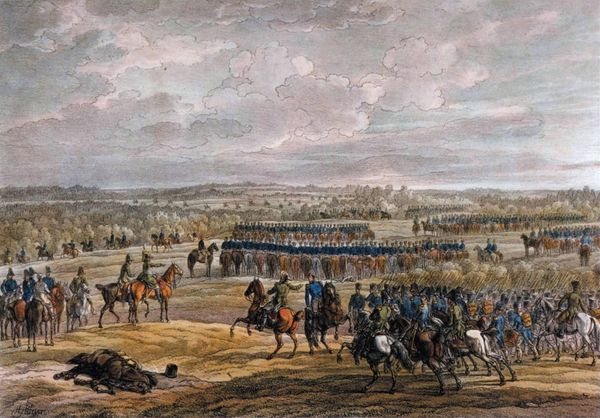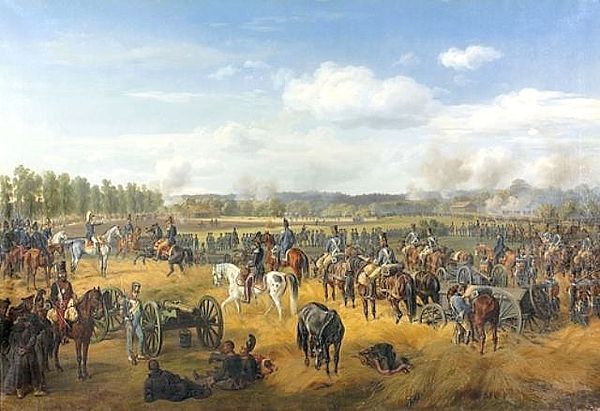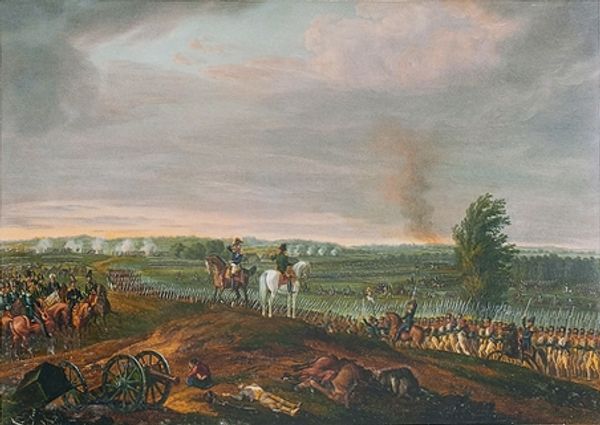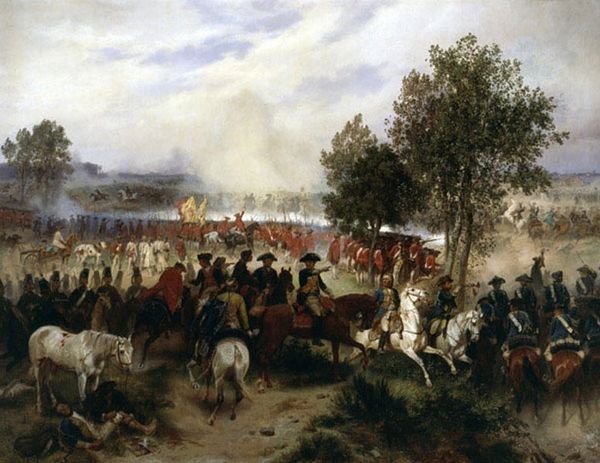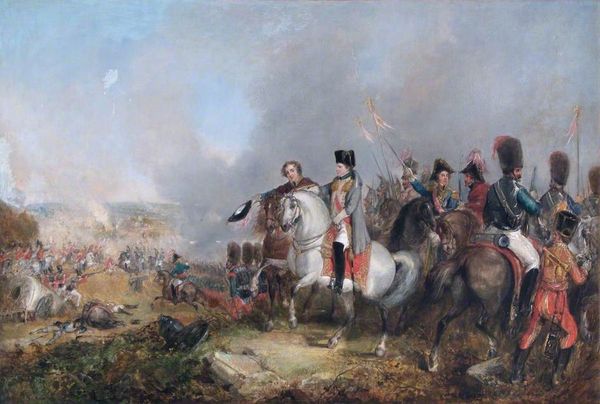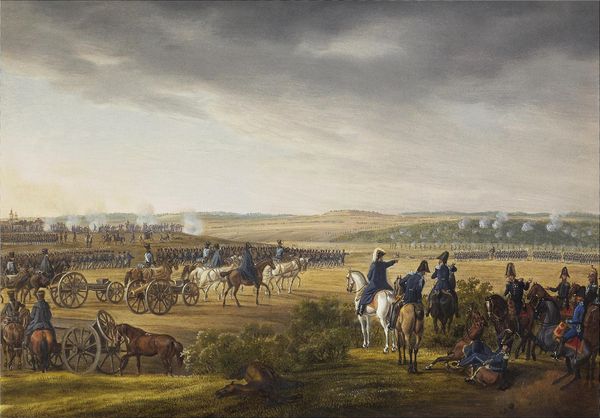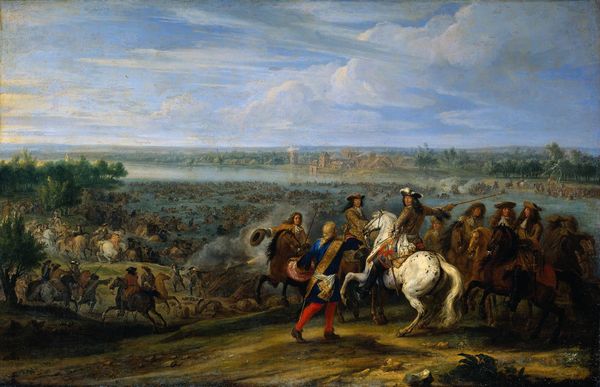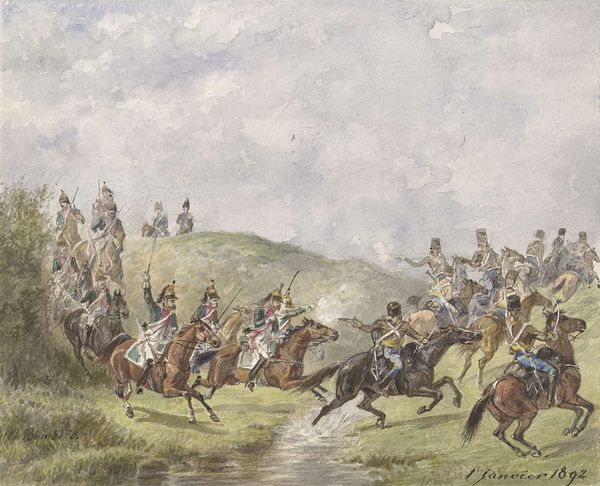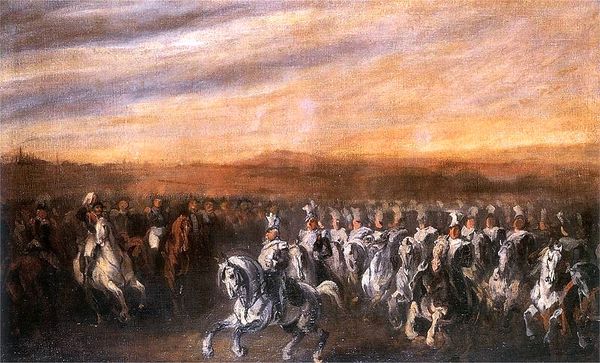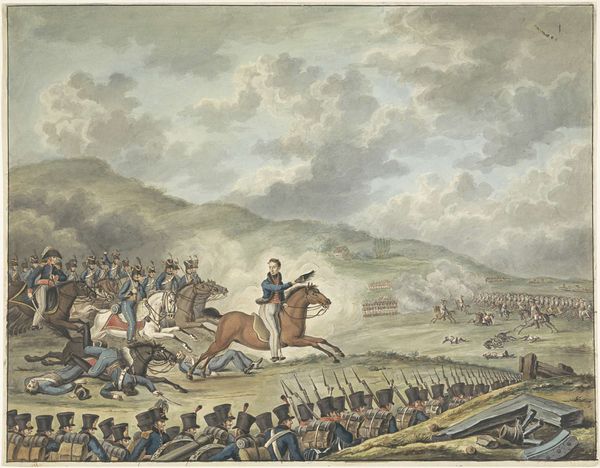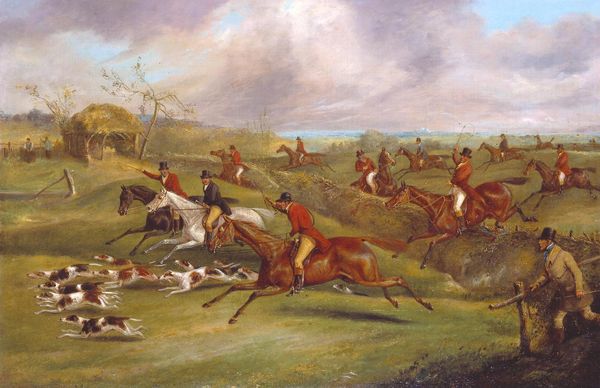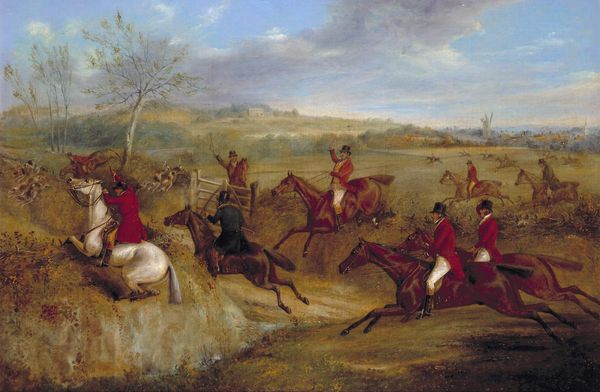
painting, oil-paint
#
portrait
#
painting
#
oil-paint
#
landscape
#
oil painting
#
romanticism
#
genre-painting
#
history-painting
Copyright: Public domain
Editor: This oil painting by Albrecht Adam, created in 1812, is entitled "Napoleon and His Troops at Beshenkovichi, 24th July 1812." The vastness of the landscape, combined with the multitude of figures, really gives a sense of the scale of the Napoleonic campaigns. What’s your take on this scene? Curator: It's crucial to view this painting not just as a historical record, but as a carefully constructed piece of propaganda. Adam, serving in the Bavarian contingent of Napoleon’s army, certainly had a specific agenda. Consider the vast open landscape. Do you think it reflects the optimism of the campaign at its outset, before the devastating retreat from Russia? Editor: I suppose so. There’s a strange feeling of openness. Despite the cannons and soldiers, the tone feels almost celebratory. Is this portrayal of war typical for its time? Curator: Not exactly. Romanticism often idealized conflict, focusing on heroic leadership. However, paintings like this served the powerful, justifying massive military expenditures and promoting imperial ambition. Think about who controlled the narrative through images, and who didn't have a voice. How do the common soldiers feature in the piece versus Napoleon himself? Editor: You're right, the focus is definitely on Napoleon as a leader. He's quite prominent. What does it tell us about how war was presented to the public, then? Curator: This painting is more than just art; it's a statement about power, legitimacy, and the visual language used to cultivate support for military ventures. It’s a window into the politics of imagery in a period of profound upheaval. Editor: That really shifts my perception of the painting! Thanks for pointing out how much historical and political context can change the reading of artwork like this. Curator: Absolutely. Remembering to ask *who* benefits from such representations can drastically alter our understanding of them.
Comments
No comments
Be the first to comment and join the conversation on the ultimate creative platform.
